When you're relying on battery power during a trip, the question that's always in the back of your mind is, "How much power do we have left?"
Modern Airstreams are equipped with a voltmeter that tells you the current voltage in the batteries (you'll find it on the "SeeLevel II" panel in late model Airstreams).
Many Airstreamers believe that the voltage data displayed on this panel is telling them the amount of power they have left in the batteries. That's because there are hundreds of charts on the Internet that equate battery voltage with the battery's charge level.
Unfortunately, that doesn't work very well in the real world of Airstreaming.
The voltmeter does not tell you the level of battery charge. It tells you the voltage in the electrical system. The voltmeter reads the entire electrical system, which includes the impact of anything that might be using power (like a light) and anything that might be supplying power (like a solar panel). Therefore, it's not an accurate proxy for the amount of battery charge.
If you rely on voltmeter data as a way to determine how much battery power you've got left, you're headed for trouble when you're boondocking.
A tale of 3 Airstreamers
We just returned from a boondocking rally where three Airstreamers' batteries went dead by the second day of the event. None of them could figure out why, so they asked us for help. Although the details of each situation were slightly different, the root cause was the same: All three Airstreamers thought the voltage reading on their SeeLevel II panel was telling them the amount of usable power/battery charge they had left.
Let me clarify that although the voltage reading on the SeeLeveL II panel can mean the batteries are fully charged – for example, if you have lead acid batteries and the voltage shows as 12.6v, that indicates you've got 100% battery charge – this is only true if the battery is not being used and has been allowed to "rest" for a while.
This essential fact is usually omitted when you read something on the Internet about battery voltage. In real world conditions, the batteries are nearly always in use while you are camping. Plus, if you have rooftop solar panels, they are often feeding some level of power into the battery, and that skews the voltage reading too.
Since power is flowing in and out of the batteries unpredictably throughout the day, you can't assume what the voltmeter tells you is really an accurate reflection of the battery's condition. Doing so would be like trying to get an accurate weight of a cat that won't sit still on the scale.
So, while our three fellow rally goers thought their voltage "looked ok" throughout the day, their connected appliances, lights, and devices were slowly using up the power in their batteries, until they went dead. And they were none the wiser because they didn't have a better way to measure the charge level of their batteries.
For example, one couple checked the voltage on the SeeLeveL II panel in the afternoon when their rooftop panels were getting some sun. The voltage reading made them think their batteries were full. They assumed that the solar panels were charging the batteries to full every day, but that wasn't the case, and so after three days they ran out of power.
Stop relying on the voltmeter! Start using an amp-hour meter
Voltage meters have been used as a "best guess" at the amount of battery charge for many years. They're better than nothing, but those volt meters have always been giving you inaccurate information about battery charge.
The better technology for today's Airstreamer – especially if you camp away from hookups – is an amp-hour meter. It's the only way to have accurate information about the amount of charge in your batteries, and it's an absolute must-have for those who have lithium batteries because voltage is especially inaccurate for estimating the charge of lithium batteries.
How an amp-hour meter works
An amp-hour meter is connected directly to the batteries – not to the electrical system. It's so accurate that you can know precisely (within 1%) how much power you've got left.

An amp-hour meter uses a little device called a shunt which measures every bit of electricity that goes into or comes out of the battery. It's like the power meter on your house, keeping careful track of exactly what you use.
Because an amp-hour meter counts the power going in and out, it's great for people with solar. You can see the real impact of your solar panels, minus the power you're using. In other words, an amp-meter tells you the real story of how much power is reaching your batteries.
We recommend the installation of an amp-meter in the instruction guide for our Portable Solar Kit. There are many brand options out there, and all of the popular ones basically do the same job. So your decision really comes down to features and cost.
We chose the Victron SmartShunt (pictured above) for our Airstream because does not require drilling and delivers the data through an app. Other brands require professional installation and will create a hole in the wall for installing a wall mounted panel.
Other brands include Bogart Engineering and Xantrex.
 How hard is it to install an amp-hour meter?
How hard is it to install an amp-hour meter?
It ranges from "fairly easy" to "a bit of work" to "have it professionally installed," depending on the type you buy and your level of skill.
There are usually two parts: a shunt that connects to the battery, and a monitor that gets mounted somewhere inside your Airstream.
 Running wires from the shunt to the monitor can be a tricky job if you pick a difficult-to-reach location. For this type, expect installation to take a few hours.
Running wires from the shunt to the monitor can be a tricky job if you pick a difficult-to-reach location. For this type, expect installation to take a few hours.
The Victron "SmartShunt" amp-hour meter doesn't have a wall monitor. Instead, you connect to it through Bluetooth from an app on your phone. The installation is much simpler, but in our experience the Bluetooth range is not impressive, so we also recommend getting their "VE.Direct Bluetooth Dongle" so that you can check the batteries from anywhere in or around your Airstream.
With either type (wall monitor or app), everything that is connected to the batteries must be disconnected and run exclusively through the shunt that comes with the amp-hour meter. You need to be knowledgeable about 12 volt wiring, have the tools to cut and crimp wire connectors, and understand the basics of electrical safety. If you're not comfortable with this sort of job, any competent RV technician or RV solar installer can do the job for you.
Using the amp-hour meter to check battery charge
The meter (or app) will give you the batteries' state of charge in percent, from zero to 100%.
Here's the data from our Airstream sitting in the driveway, with the refrigerator, one fan, and the ceiling lights turned on. We had full hookups the night before we returned home so you can see the battery charge is 100%. Look at the 19.07 Amp load: most of that is from the refrigerator, which we set to run on 12 volt power before taking this screenshot.

To be sure the amp-hour meter data is accurate, you'll do a bit of setup after installation, which requires you to know the capacity of your batteries, in amp-hours.
The amp-hour rating is typically printed on the battery case with a number and the letters “Ah.” If not, search online for the rating, using the make and model of batteries you have. A typical Airstream trailer will have AGM or "wet cell" batteries rated at 60 to 85 amp-hours per battery. Lithium batteries of the same size will usually be rated at 75-100 amp-hours per battery.
Remember that discharging lead-acid batteries more than 50% will shorten their overall lifespan. For that reason, it's recommended to set a "floor" level at 50% of the total rated battery capacity. For lithium batteries you can set the floor much lower (10-20%) because they can be discharged more deeply without harm.
Can an amp-hour meter also tell us how much power we're using?
Yes. It's shown on the preceding screenshot in the "Current" section.
If the Airstream is not plugged into power, the meter will show how much power is coming out of the batteries, in real time, as a negative number. If you have sun shining on solar panels, it will show the net energy that is going into the batteries (a positive number) after subtracting what's being used by appliances at that moment. It will also show you the net gain/loss in the batteries over a period of time. This is really helpful to understand what activities and appliances are the energy hogs in your Airstream.
For example you'll find that the furnace and water pump consume a lot of power (7 to 10 amps when running). But because the furnace usually runs a lot more than the water pump, its impact on your batteries is much bigger.
You'll also be able to see the actual stand-by (or "parasitic") drain that happens even when everything is supposedly turned off. With an amp-hour meter installed, you'll learn a lot—which will make you a more confident camper and avoid killing your batteries.
Modern Airstream owners need modern technology to manage the power needs of all the appliances and devices we all like to travel with. Stop using the voltmeter and put an amp-hour meter on this year's upgrade list. You'll travel smarter and have accurate data that will keep you from running out of power.






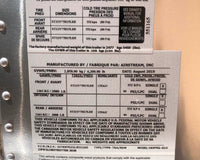


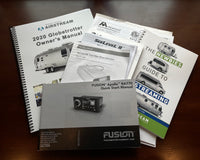
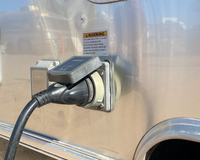
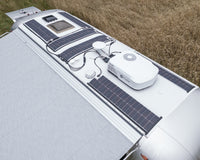
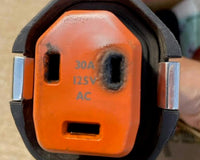



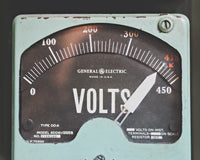
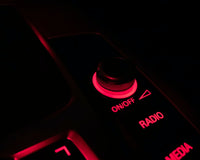

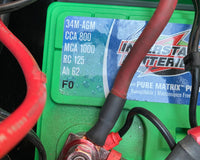
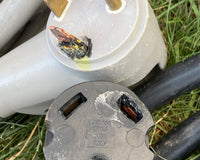
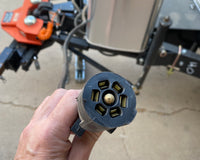

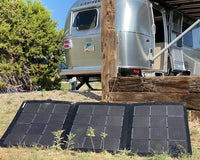
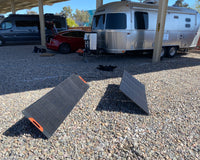
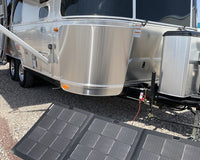



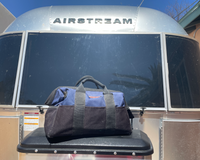









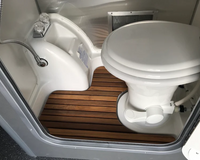

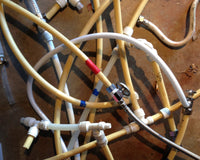



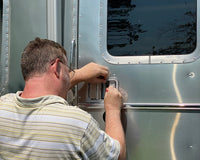

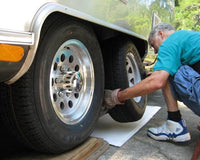



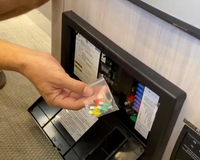


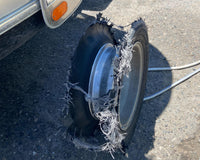


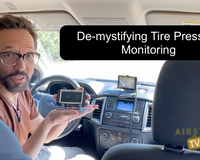



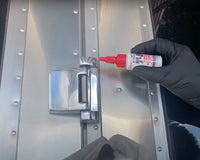

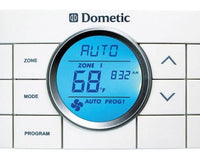



























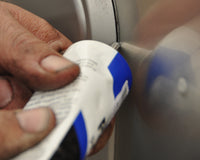



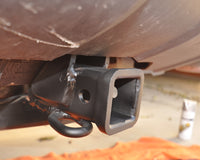

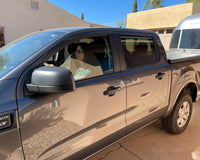
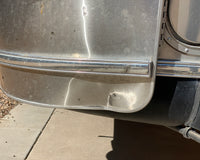









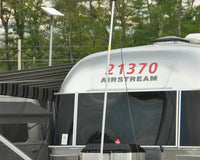
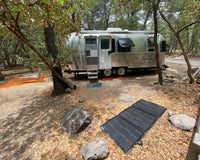













9 comments
Kerry Frank
Thanks for your help with this Rich. I chose the Victron BMV 712 Smart with Bluetooth. We’ve just begun a month-long trip and stayed our first night dry camping. The Amp-Hour meter was essential in managing power with no solar and only on battery power! We can really see how helpful the meter will be once we add solar.
Robert Tober
Would be great to see a step-by-step video showing how to accomplish this installation. Thanks for a great article
Joffre filion
Thanks. The information was very helpful.
Gordon Drake
Thanks much, excellent information.
I wonder if the secondary system I have installed is giving me the same false hope? I have a Freedom HFS Inverter with a wall monitor under my SeaLevel monitor… Hmmmm. Will do my due diligence on this.
Steve Carlson
I love my Victron Battery Shunt. Our first long trip with our Airstream we relied on the voltmeter. We were staying at HH with no shore power. My wife works remotely in our AS and uses lots of power (PC, monitors, inverter, Starlink), Second morning we woke up with no power. Next week we installed a battery shunt and no more power outage.
Walt
Not understanding that a volt meter does not indicate remaining stored power while in the eastern sierras sent me down the path to the victron 712. My battery supplier educated us on the term ‘surface charge’ with our AGM batteries. 270 watts of solar got the voltage up but did not restore the depth of power. Cold nights depleted the batteries quickly. Now with Li type 24 batteries, victron 712 system, every watt in and out is known. The tongue weight is also down 60#. The install took a couple of days as I added buss bars, iso switch, and cleaned up the rats nest of wires under the twin bed. Boondocking is a breeze and limited to the waste tanks getting filled, not power woes.
Joe
Excellent article! Having been a cruising sailboater I totally understand the worth of the amp meter.
We never had this technology back in the day and it was a guessing game where the charge was.
I use to listen to the quality of the cabin fans drone to estimate amp hours
Patrick Tenney
I’m setting up a Victron Smart Shunt and (2) 100 Ah Lithium batteries in our 2023 Globetrotter. I’m a bit confused with some of the terminology. Can you explain the differences between “Charged Voltage” vs “Float” vs “Bulk / Absorption”?
Thanks and love your blogs!
Rich Luhr
Patrick T: “Charged voltage” is what the battery should show when fully charged and not connected to anything. For lead-acid batteries this usually is about 12.6 – 12.7 volts. For lithium iron phosphate batteries (LiFePO4) this is usually about 13.6-13.8 volts. Check the manufacturer’s specs for your brand of battery.
“Bulk/Absorption” is the input voltage needed by the battery to charge it. In the case of lead-acid batteries, they charge at the “Bulk” rate until they are mostly full, then drop down to the lower “Float” rate to finish and maintain the charge. Lithium batteries generally use the “Bulk” rate right up to 100% and then simply stop charging. For example the manufacturer of Battle Born lithium batteries recommends a Bulk charge of 14.2-14.6 volts.
So, “Float” applies only to lead-acid batteries. It’s a lower voltage input needed to get the lead-acid battery up to 100%, and to keep it from slowly self-discharging during storage. You can think of this as a maintenance level of charging for lead-acid batteries.